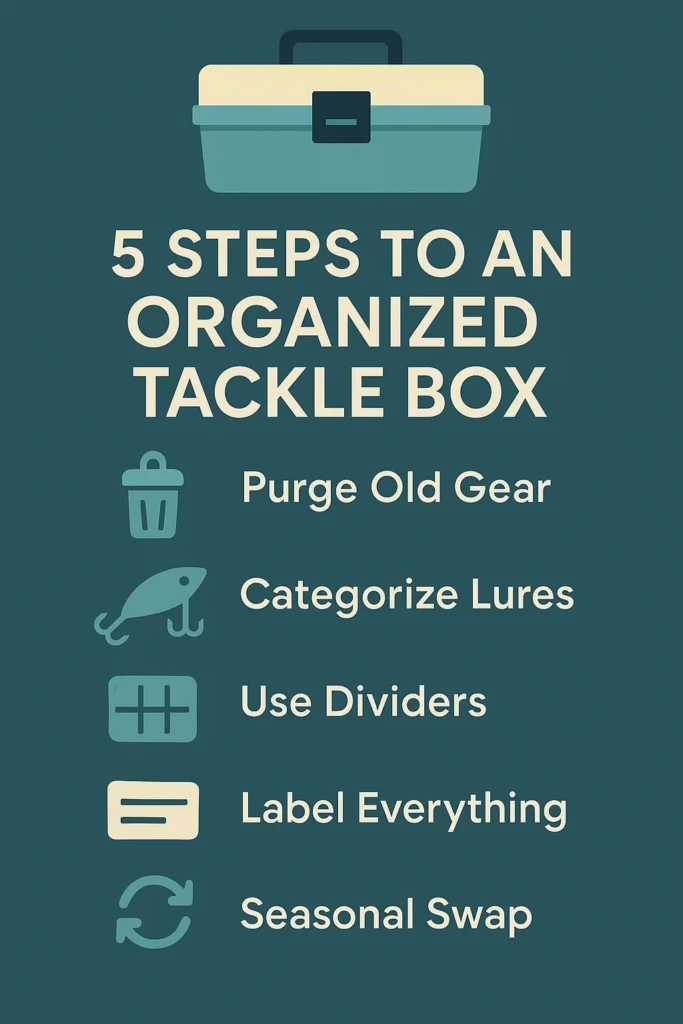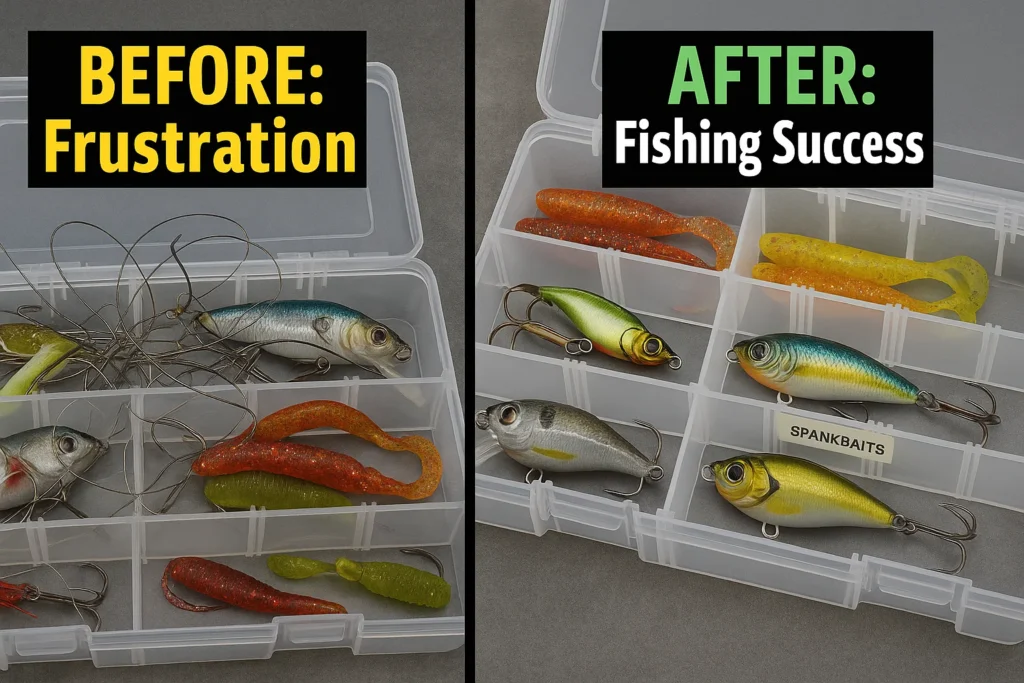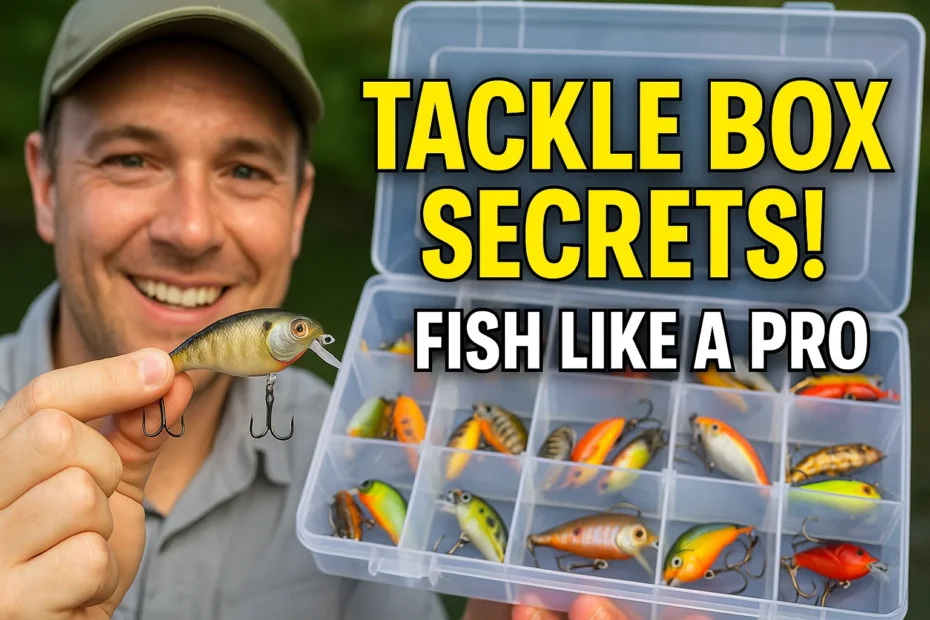Transforming your tackle box helps you fish better. It means organizing your gear to fit your needs, making every trip easier and more fun.
In a Nutshell: Customizing Your Tackle Box
- You will learn simple ways to sort your fishing gear.
- You will find out how to protect your valuable items.
- You will discover tips for faster setup on the water.
- You will get ideas to match your box to Canadian fishing.
Estimated reading time: 6 minutes
Ever feel like you spend more time searching for gear than fishing? A messy tackle box can slow you down. Learning how to transform your customizing tackle box for success changes everything.
It makes your fishing trips smoother and more enjoyable. You can learn more about general fishing tackle boxes and storage here.
Why a Custom Tackle Box Matters
A well-organized tackle box is key for good fishing. It helps you quickly find the right gear. This saves time and stops your lures and tools from getting lost or tangled. For Canadian anglers, making your tackle box fit your fishing style, target fish, and seasons helps a lot. It makes your time on the water better.

Simple Ways to Organize Your Tackle Box
Sorting your fishing gear makes a big difference. Here are easy ways to do it:
- Sort by Type: Put lures, hooks, and weights into separate groups. Then, sort them by how you fish, like for jigging or topwater. This helps you find things fast.
- Use Dividers: Get tackle boxes with dividers you can move. This lets you make spaces for different sized items. It stops gear from breaking or tangling.
- Label Everything: Write clear labels on each spot or box. This helps you know what’s inside at a glance. Modern tackle boxes often have clear lids and spaces for labels, making tackle management easier.
- Stackable Storage: Use boxes that stack or separate packs. You can swap them for different trips. This also helps you change gear for Canadian weather and fish, a smart approach for varied conditions.
How to Customize Your Tackle Box, Step-by-Step
Follow these steps to set up your tackle box:
Step 1: Clean Out Your Gear
First, check all your fishing items. Throw out anything broken, rusty, or damaged. Do this once a year. It keeps your box neat and stops gear from failing. Make sure all lures and hooks are dry before you put them away. This stops rust, especially in wet Canadian weather.
Step 2: Sort for Your Fishing Style
Think about how you fish. Do you fish for bass, trout, or ice fish? Make separate areas or boxes for each type of fishing. Store soft plastic baits in binders or resealable bags to preserve shape and prevent tangles.
You can find more tips on customizing soft plastic baits.
Step 3: Pick the Right Box
Choose a strong, waterproof tackle box. Look for one with dividers you can move. Consider specialized storage like Plano’s StowAway Utility Boxes with crystal-clear lids and secure closures to protect against accidental spills and environmental exposure.
Step 4: Arrange Your Gear Well
Put the things you use most often where you can reach them easily. Store bigger items or things you rarely use at the bottom. Use removable holster kits or shot packs to consolidate essential items in one spot. For more on tools, check out fishing tools.
Step 5: Label Everything
Use waterproof labels. Update them often. Change your setup if needed after a fishing trip.
- Clean Often: Dry lures and tools after each trip to stop rust.
- Sort by Fish: Group gear for specific fish like bass or trout.
- Label Clearly: Use waterproof labels so you know what’s where.
- Check Annually: Look for broken or rusty items once a year.
Special Tips for Canadian Anglers
Canadian fishing means dealing with cold and wet conditions. Your tackle box needs to be tough.
- Weather Ready: Pick boxes with waterproof seals. This protects your gear from rain and snow. Some even have insulated spots for bait. Look for rust-resistant parts.
- Seasonal Gear: Have different boxes for summer and winter. Keep only the right lures for the season in your main box. This saves space.
- Local Fish: Change your box based on local fish species like Northern Pike, Walleye, Bass, or Trout:
- Northern Pike: Use heavier lures and strong leaders.
- Walleye: Use jig heads and soft plastics in earth tones.
- Bass: Sort crankbaits and topwater lures by size and color.
- Trout: Keep small spinners, flies, and ultralight gear separate.
Tackle Box Readiness Check
- All gear dry and clean?
- Rusty items removed?
- Lures sorted by type?
- Compartments labeled?
- Right gear for next trip?
New Ideas for Your Tackle Box
Modern tools can make your tackle box even better.
- Smart Tools: Use magnetic holders for tools on your box lid. Look for clear, stackable containers. Padded cases can hold delicate electronics. You can even use apps to track your gear. This helps you avoid buying too much.
- Better Light: Some tackle boxes have LED lights. You can also add lights. This is great for night fishing or low light, common in Canada’s north.
Keeping Your Tackle Box Ready
Good care keeps your gear working well.
- Clean and dry your tackle after every trip. Then put it back.
- Check your box often for wet spots, rust, or wear.
- Once a year, think about what gear you really need. Adjust your setup as your fishing changes.
- Put small silica gel packs inside your box. They soak up moisture. This helps your gear last longer.

My Experience: A Custom Tackle Box Changed Everything
I used to just throw all my lures into one big box. Every trip meant digging around, wasting time, and often finding tangled messes. One cold spring morning, fishing for walleye, I couldn’t find my favorite jig. It was buried under a pile of bass lures.
That day, I decided to truly transform my customizing tackle box for success. I spent an afternoon sorting, labeling, and using small clear containers. The next trip was amazing; I found everything instantly. It truly made fishing more enjoyable and less about the frustrating search.
Benefits of an Organized Tackle Box
An organized tackle box helps you in many ways:
- You spend less time getting ready to fish. This means more time actually fishing. If you’re just starting out, understanding essential fishing gear for beginners is a great first step.
- You get less upset from lost or tangled gear.
- You feel more ready and confident. This helps you fish better.
- You manage your gear well. This saves money and reduces waste.
Your Questions About Customizing Tackle Boxes Answered (Simply)
How do I organize my fishing tackle box?
What is the best way to store soft plastics?
How do I keep my fishing hooks from rusting?
Should I have different tackle boxes for different types of fishing?
What are modular tackle boxes?
How often should I clean my tackle box?
What kind of labels should I use for fishing gear?



